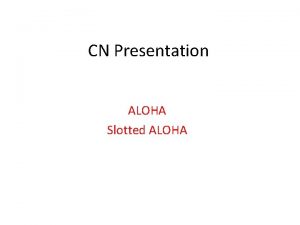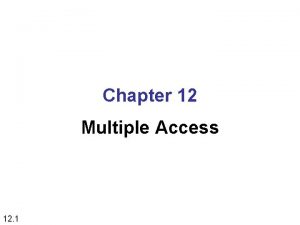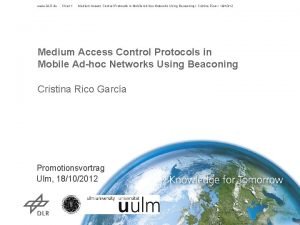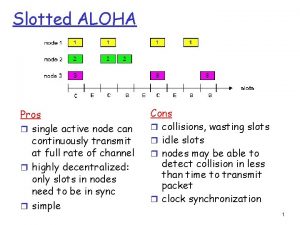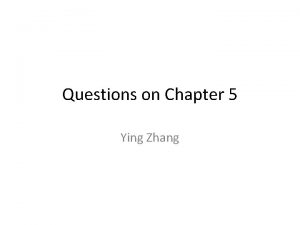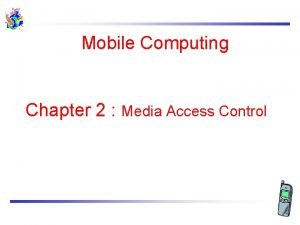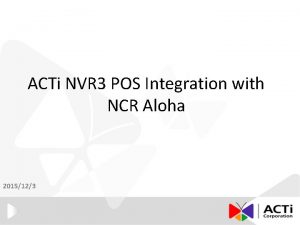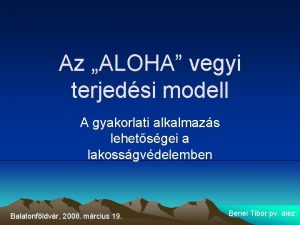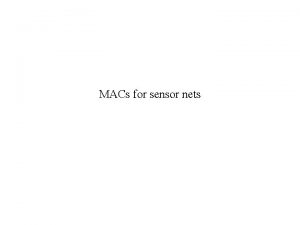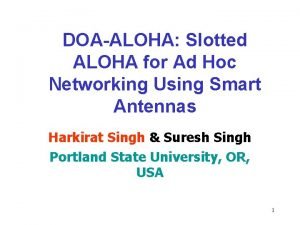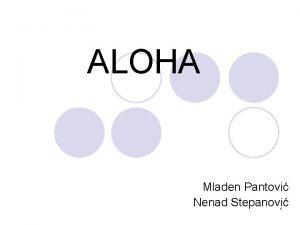Course Project Simulation of the Slotted Aloha Protocol









- Slides: 9

Course Project Simulation of the Slotted Aloha Protocol Esa Alghonaim COE 543 , 2003 -2

• Simulation flow. • Reference results (The analytical equations & curves). • Simulation Results & Graphs. • Conclusion

Simulation flow. (programmed using Delphi) No Iteration > Max_Iter Yes G = Tot_attempts / Slot S = Tot_succ / Slot Delay = Tot_Delay Schedule new arrival time for the terminal Stop Simulation Start Simulation Slot = 0 , Iteration = 0 , Tot_delay = 0 , Tot_attempts = 0 , Tot_succ = 0 Schedule time Arrival for each terminal inc Iteration Slot = Minimum arrival/retransmit time for terminals. N = Number of terminals that has arrival/retransmit time = Slot No Successful Slot inc Tot_attempts inc Tot_succ Tot_Delay = Tot_Delay + (Slot-Arrival) Schedule new arrival time for the terminal N>1 Yes Collision Slot Tot_attempts = Tot_attempts + N Assign a random Backlog time for the N colliding packets. If first collision for a packet, schedule new arrival time for the terminal. 4/1 Section

Analytical Results, S vs. G Throughput Offered Load Back. Log Constant Probability of successful transmission / new packet Probability of successful transmission / retransmitted packet Average Number of retransmission cycles 4/2 Section

Analytical Results, S vs. G Using the symbolic toolbox in the Matlab to generate equations and solve them for different values of G & K. 4/2 Section

Analytical Results, Delay vs. S a: normalized delay r: collision detection slot 4/2 Section

Simulation Results, S vs. G Fig. 1 Analytical and Simulation results for Throughput (S) vs. Offered Traffic (G). 4/3 Section

Simulation Results, Delay vs. S Fig. 2 Analytical and Simulation results for Delay vs. Offered Traffic. 4/3 Section

Conclusion • Analytical and simulation results are very near to each other • Both analytical and simulation results indicate that there is an optimum point where the value of the throughput (S) becomes maximum, equal to 0. 36 • Increasing the offered traffic beyond this value, both Throughput and Delay becomes worse. 4/4 Section
